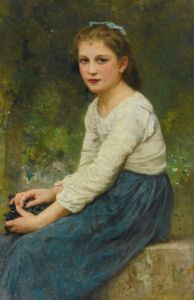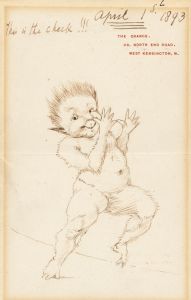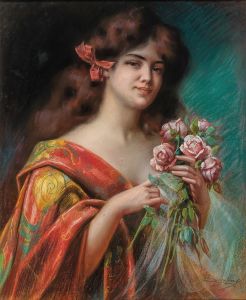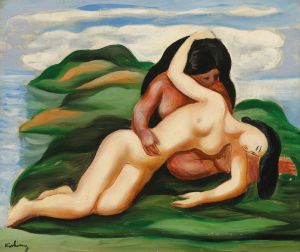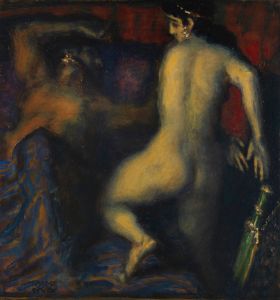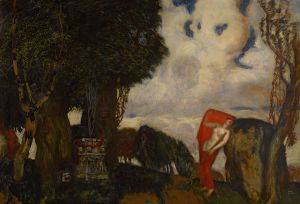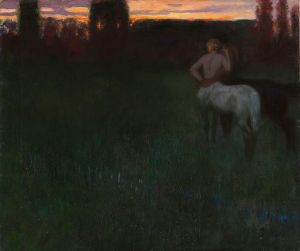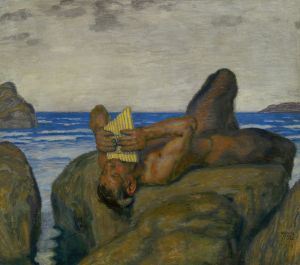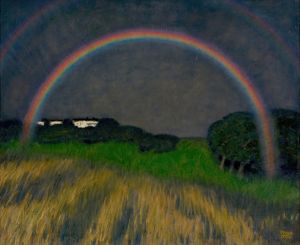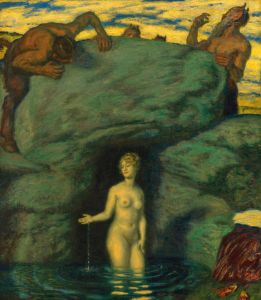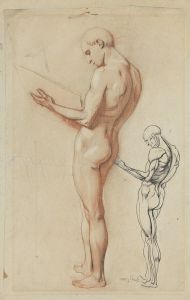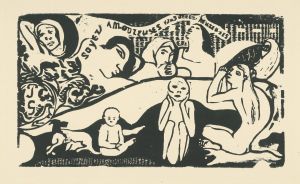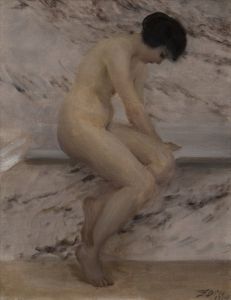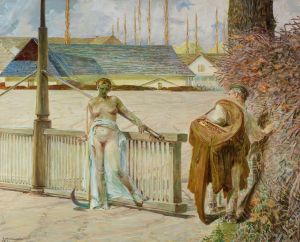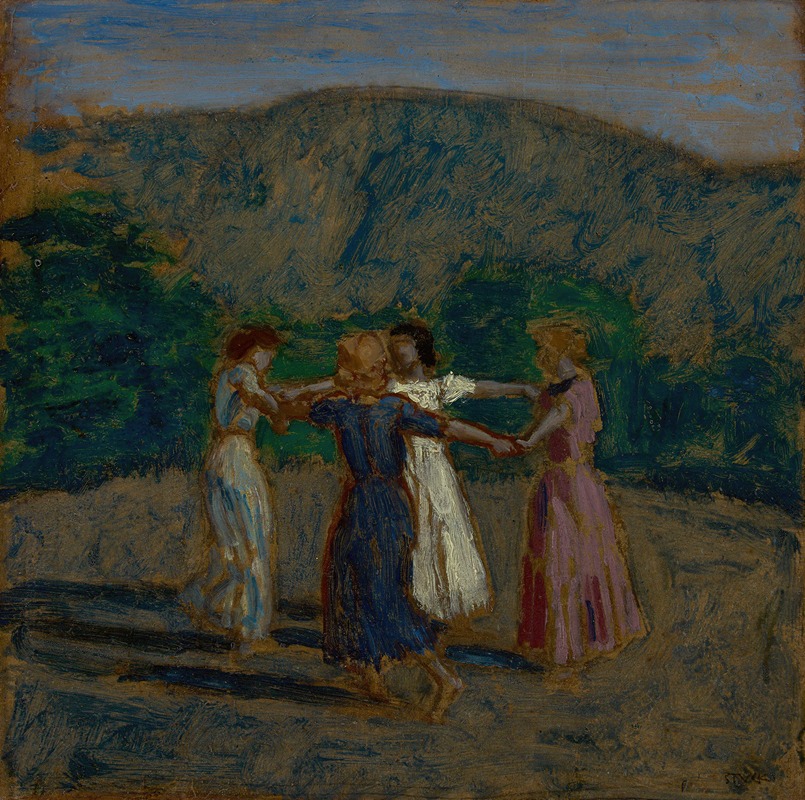
Ringelreihe
A hand-painted replica of Franz von Stuck’s masterpiece Ringelreihe, meticulously crafted by professional artists to capture the true essence of the original. Each piece is created with museum-quality canvas and rare mineral pigments, carefully painted by experienced artists with delicate brushstrokes and rich, layered colors to perfectly recreate the texture of the original artwork. Unlike machine-printed reproductions, this hand-painted version brings the painting to life, infused with the artist’s emotions and skill in every stroke. Whether for personal collection or home decoration, it instantly elevates the artistic atmosphere of any space.
Franz von Stuck's painting Ringelreihe is a notable work by the German Symbolist artist, who was active during the late 19th and early 20th centuries. Stuck, a founding member of the Munich Secession, is renowned for his evocative and often mythological imagery, which frequently explores themes of human emotion, sensuality, and the interplay between light and shadow.
The title Ringelreihe translates to "Ring Dance" or "Round Dance" in English, suggesting a circular or communal dance, often associated with folk traditions. The painting depicts a group of figures engaged in a circular dance, a motif that has been interpreted as symbolizing unity, rhythm, and the cyclical nature of life. The composition is characterized by Stuck's signature use of dramatic contrasts and a muted yet striking color palette, which enhances the dreamlike and almost mystical quality of the scene.
Stuck's works, including Ringelreihe, often reflect his interest in mythology, allegory, and the human condition. His style combines elements of Symbolism and Art Nouveau, with a focus on decorative detail and emotional intensity. While Ringelreihe is less widely discussed compared to some of his other works, such as The Sin (Die Sünde), it remains an example of his ability to convey complex themes through visually compelling imagery.
The exact date of creation for Ringelreihe is not definitively documented, but it is consistent with Stuck's broader body of work from the late 19th to early 20th century. The painting exemplifies his fascination with the interplay of movement and form, as well as his ability to evoke a sense of timelessness and universality.
Franz von Stuck's contributions to art extend beyond his paintings; he was also an accomplished sculptor, architect, and teacher. His influence on the Munich Secession and his role as a professor at the Academy of Fine Arts in Munich helped shape the careers of many younger artists, including notable figures such as Paul Klee and Wassily Kandinsky.
While specific details about Ringelreihe's provenance, exhibition history, or critical reception may be limited, the painting remains a testament to Stuck's artistic vision and his ability to capture the essence of human experience through symbolic and evocative imagery.





